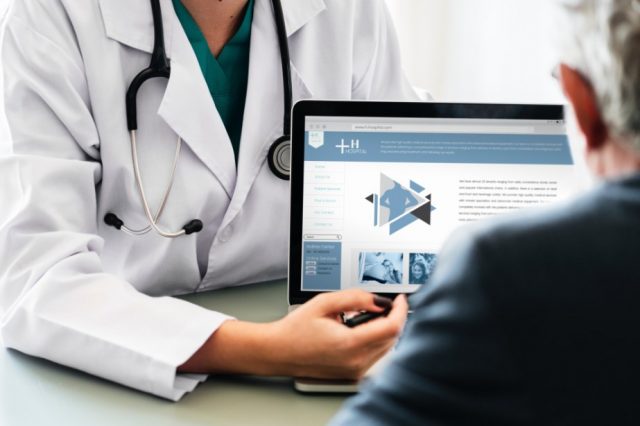With the rising medical ailments are the rising medical costs which an average person finds difficult to meet. In this expensive medical market, technology use may be seen as an unaffordable luxury. But the key is that the use of RIGHT technology actually can reduce the overall cost of medical treatments. With the use of technology, we can easily get a doctor appointment. Technology also helps the patient in learning about medicines such as they can search for Avil Composition.
Acceptance of Technology in Medicine
With the present sedentary lifestyle and bad choices, chronic diseases, heart ailments, and Alzheimer’s are on the rise.
For these long-term ailments, the patients will need to bear a cost burden. This burden can be significantly reduced if the doctors diagnose, prevent or treat these conditions as early as possible. And this requires R and D technology.
Acceptance of new technology in the healthcare market too will take time. Healthcare providers need to justify the high costs against the benefits to patients’ health. Breakthrough in technology not only takes time to deliver but savings for the patient are spread over the whole course of treatment.
Providing efficient savings through high technology is a challenge in healthcare, but the advantage is that these savings can be transferred to another healthcare provider if the patient moves under his care.
Healthcare today runs mostly on digital technology. Medical equipment’s run on digital platforms. There is various software used in hospitals to store and access information.
Another add-on of technology in Medicare is that patients taking medicines can know about the medicines. For example, if someone is prescribed Montairlc, they can search for Montairlc Composition, uses and more.
Technology in Healthcare- A Boon
The following are the few ways in which technology can offset the healthcare costs drastically:
Reduce time spent in the hospital through improved surgical procedures
Surgical procedures are becoming minimally invasive with the help of battery-operated ultrasonic, laser and RFID enabled tools. Smaller, low and self-powered electronics are less invasive, have better results and potential to control infections.
With the help of these instruments, treatments can be done in a clinic instead of a hospital. Although the initial cost of instruments is high, the savings will be high in the long run. These instruments reduce the time spent by patients in the hospital and for postoperative care.
Expedited and Accurate Diagnosis
The procedures for pathology and diagnosis are fast changing. Currently, the time-consuming biopsy procedure tool has been replaced by visualization and virtual pathology that is done in real-time to the patients.
OCT (optical coherence tomography) is a 3D imaging system that uses only light instead of sound. This was earlier only used in ophthalmology, but it has found its application in cancer detection and vascular disease imaging.
Invasive colonoscopy and endoscopy have been replaced by advanced processing technology. Virtual MRI and CT scans have proved useful for easier and patient-friendly disease detection. Also, the PACS system can lead to a faster and more accurate diagnosis by allowing medical images to be stored, accessed, and shared digitally, improving efficiency, reducing the risk of errors, and enabling remote consultations with specialists.
Facilitate Remote Patient Monitoring
Managing a patient’s condition from a remote place is highly convenient for the physician and the doctor. e-Health or Connected Health are the terms describing this technology. There are online doctors free available for advice and consultation at any time needed by the patient.
Other than smartphones and gadgets, the enablers for this technology are smart sensors, advanced user interface, analytics and data processing. These e-health apps can reduce hospital visits to a large extent and enable patient compliance.
One example of a remote monitoring device is the glucose monitoring system developed by Senseonics that works with a wireless transmitter, a sensor, and a smartphone app. This setup helps in the detection of blood sugar level every few minutes and give alerts to the patient and the physician.
The second example is the Smarthaler, a system developed by Sagentia for asthma patients. This uses acoustic detection technology along with a cloud-based server operable from a mobile app. This helps to monitor if the patient is administering his medicines properly or not. This system gives the patient warnings in case of incorrect dosage and provides the doctor with the whole treatment report.
Technology for advanced disease prevention
An advanced technology that is in the early stages is 3rd generation DNA sequencing. This technique has the capability of reducing the overall expenditure of treating the patient through more personalized therapies and treatments, reducing drug wastage, time and cost.
A groundbreaking technology such as single-molecule detection combined with data analytics has helped in converting raw data into useful information with only marginal errors.
Automation of Administrative tasks
Administrative expenses constitute most of the expenses in any hospital. Doctors spend over 30% of their time entering patient details. This leads to ineffective use of the physician’s time and quickly burnout.
Digitization of patients’ health records using tools like artificial intelligence helps minimize and automate physicians work. For instance tasks like retrieving test results and updating patent, records can be automatically programmed. Prescription advise, as well as reminders, can also be atomized to ease the burden on doctors so that they can make more time for patients.
Administrative tasks such as appointment fixing and reminders can be digitized to improve clinical efficiency and reduce administrative staff’s paperwork.
Use of Scheduling apps to lower staffing costs
Scheduling apps can help efficiently allocate existing human resources without resorting to expensive alternatives like temp hires, overtime staff and so on.
Proper scheduling of staff has a direct impact on the costs and patient intake. Currently, hospitals enforce voluntary overtime and forceful filling of gaps between shifts. These turn out expensive for the hospital as well as overload for the staff.
To combat such problems, the administration needs to use technology that integrates information of earlier shifts, current patient requirements and use the existing staff to their maximum potential without overworking them.
Some scheduling apps also allow nurses and other staff to circulate these schedules on their mobile devices so that they get real-time updates.
With the more complex program and AI, these apps can provide information about future staff demands while addressing current needs simultaneously.
Digital marketing to target more patients
Digital Marketing helps to reach out to more patients on a one to one basis rather than traditional marketing techniques.
With skyrocketing health care costs, patients are more than willing to shop around online until they find the best hospital or doctor. Unlike previous decades, today’s millennials do not hesitate to switch their care provider if they find a more suitable one.
Digital marketing targets potential niche patients online who are looking for healthcare to treat specific conditions. Since most people are online for most of the time, online marketing will cost significantly lesser than traditional methods and will have a greater impact.
Information about online doctor free services is also made known to patients via digital marketing.
Digitization of insurance processing
Claims processing in insurance is the most time-consuming operation for both the insurance companies and the clinics.
Digitizing insurance information processing can save 90% of the time and cut costs significantly. Automation of claims processing and management of disputes can reduce labour costs, increase customer satisfaction and improve payment efficiency.
Automation of Supply Chain
New supply chain analytical and software tools have helped in smooth inventory tracking, allocation of resources and reduction in wastage.
Expensive inventory such as hospital equipment has RFID tags similar to barcodes that help providers to track the equipment throughout its use and obtain location information, manufacturer, expiration date, shipping data and so on.
Digital information can also be used to track disposable supplies which are otherwise piled away in a corner leading to wastage of space, time and resources.
Data analytics and tools for automation play a significant role in managing the entire medical supply in a better manner. This helps medical staff spend more time on patient care rather than supply management.
Early detection of Fatal Diseases
Machine Learning and Data Analytics have contributed immensely to the early detection of diseases. The patients can benefit from decreased mortality rate as well as lower costs if early detection is successful.
Machine learning uses advanced algorithms and analytics for prediction purposes. This has been used in other industries for many years, has now found its way into the medical arena.
The scope of Technological Innovation in Medicine
Private and Public sectors in medicine want to lower health care costs. All providers are under pressure to show performance for fear of increasing their insurance premiums and possible penalties. This has created opportunities for industries to create new products and technology to help patients in long-term health management.
The health of the population is a by-product of various things like policies, health care practices, medical research, disease prevention and so on. Big data, Artificial Intelligence, Advanced Analytics, Machine Learning, have taken giant leaps in improving the health of the overall population and cutting costs of healthcare.
Robotics have also made their way into hospitals. They can choose pills via barcode, prepare medication and solutions even more accurately than a pharmacist or a technician. They can also transport the medicine to the appropriate unit via wireless technology. This allows for the pharmacist to concentrate on other important functions such as dosage, compounding, a drug to drug interactions and so on.
The cost and value obtained must not be an obstacle to technological innovations in the field of medicine.
It is a proven fact that technology only helps healthcare providers to provide cheaper, quicker and more effective treatments to patients. There must be structured methodologies and an eye for new innovative approaches to adapt to new technology.

Ana Miller is a creative writer. Her topics of interest and expertise range from psychology to all sorts of disciplines such as science and news.




